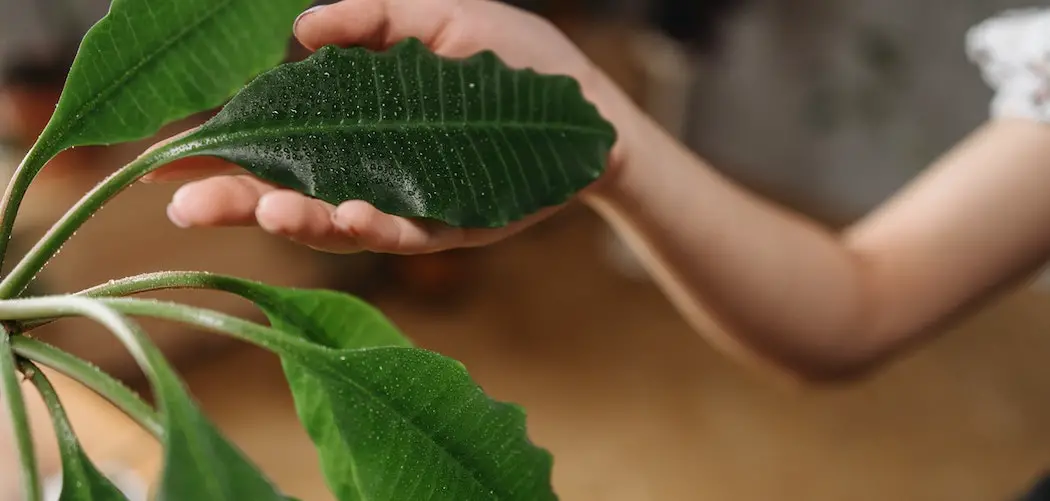Recently, plant humidifiers have been growing in popularity as well as price, but do you REALLY need one?
Most houseplants would benefit from increased humidity because our houses are drier than their natural environment, this is especially true for tropical plants.
However, understanding the different types of humidifiers as well as buying a special plant humidifier instead of using your regular household one could save you a substantial amount of money.
Here’s if Any Humidifier Will Work for Plants:
Yes, any regular humidifier will work perfectly for your plants, you don’t have to use a specific plant humidifier. However, if you have the budget or you own many large tropical plants, it’s still a good idea to purchase a plant humidifier used just for your plants.
The world of humidifiers for plants can be confusing, luckily we’ve compiled all the answers you need to know:
Humidifier Types Explained
You might be surprised to learn that there are several kinds of humidifiers, and if you are going to buy one for your plants, it’s a good idea to familiarize yourself with the different options first.
Here is a brief rundown of the humidifiers types that exist, and if they are good for plants or not:
Steam vaporizers
Good for plants: Yes
Steam vaporizers are electrically powered humidifiers that work by heating the water into a mist, cooling the mist, and then expelling it into the room beyond the humidifier. They tend to be inexpensive and are often pretty portable. They may be good if you want to tuck a humidifier unseen among your plants.
Evaporators
Good for plants: Yes
Evaporators have a fan that blows mist through a damp filter. This increases the local humidity, but it can be hard to control how much, and they may make the room too wet. They tend to be localized to just one room, which is ideal if you want to humidify your plants but not the rest of your home.
Central humidifiers
Good for plants: No
Central humidifiers are the most expensive kinds of humidifiers and aren’t ideal for humidifying plants. They are designed to humidify the entire house and are usually linked up to the central heating or air conditioning units.
Impeller humidifiers
Good for plants: Yes
Impeller humidifiers work with cool air only, so they reduce the risk of burns. They operate through the turning of discs, which fan the evaporated moisture into the room and spread it around. They work only work in a localized area, not the best if you have a room full of plants.
Ultrasonic humidifiers
Good for plants: Yes
Ultrasonic humidifiers work great for plants. They use ultrasonic vibrations to produce a mist of cool water (you can also purchase ones that create a warm mist). The price will vary depending on the size and capacity, but they are a bit more expensive than other types.
What Type Of Humidifier Is Best For Plants?
A regular household humidifier is the best type of humidifier for plants. They work the same as plant humidifiers, they are inexpensive and do a great job elevating humidity in the air.
The size and capacity of the humidifier are more important than the type. Large tropical plants will generally need a larger humidifier.
Any kind of humidifier will work for plants as long as it has several key features, including:
-
It should be easy to fill
-
It should be stable
-
It should have a large tank capacity
-
It should have a long battery life (if battery operated)
-
It should have multiple modes
-
It should have a timer
-
It should have a good range
-
It should have an auto shut-off switch
If the humidifier ticks all of these boxes, it will work well for your plants.
Read some reviews and check out some of the top options online – and bear in mind that you may need multiple humidifiers if you have a lot of different plants.
Should You Buy A Special Plant Humidifier For Your Plants?
If you really need a humidifier, using a regular household humidifier is good enough. However, if you have the budget or you have expensive plants and want to maximize their quality of life, you should consider buying a plant humidifier.
If your budget is tight and your plants are not at the top of your list of priorities, you do not need to buy a humidifier.
Most plants will cope with low humidity, and for those that won’t, there are other options (which we will look at in the final section on DIY humidifiers).
A humidifier can be pretty cheap, but the cheap ones often have limited effectiveness, so you may want to think before purchasing one.
See whether your plant actually needs a humidifier, or whether it will thrive in spite of the dry conditions created by being inside a home.
How To Use A Regular Humidifier For Your Plants
To use a regular household humidifier for your plants, simply set it up close to them and then operate it for a few hours each morning. You can flick it on as part of your morning routine, and either activate the timer or turn it off manually when it has run for 3 hours or so.
The length of time needed will vary depending on the species of plant, how dry your home naturally is, and how much the humidifier outputs, but a few hours will usually be sufficient in pretty much all circumstances.
You should avoid running a humidifier in the late afternoon, in the evening and especially overnight.
Having wet leaves overnight can cause problems for the plants and may invite mold or fungal infections.
Does A Diffuser Work As A Humidifier For Plants?
Yes, a diffuser that you tend to use with essential oils can be doubled up and used as a plant humidifier, if you run it with water. However, diffusers tend to work in a small area, so you will need to place it close to your plants, and it may not work for more than one or two medium plants.
If you already have a diffuser that you use for aromatherapy and you only have a few small plants, a diffuser can work pretty well as a humidifier.
Do Plants Need Cool Or Warm Humidifiers?
It doesn’t make difference for plants if you use cold or warm humidifiers. It might be surprising, given that most plants come from warm places, but your plants will thrive in the same way with either hot or cold humidifiers.
You would think that rainforest plants would benefit from having warm mist, rather than cold, landing on their leaves and aerial roots, but it really doesn’t make much of a difference.
It is generally better to use cold water, therefore, as this is cheaper to generate than warm water.
There is one caveat though, make sure your humidifier doesn’t double down as a fan and blows cold wind on your plants as that can affect them!
Benefits And Drawbacks Of Humidifiers For Plants
As with any gadget you can buy, there are a few different pros and cons associated with using a humidifier for your plants:
Pros:
- Almost all houseplants benefit from increased humidity to some degree
- You don’t have to worry about humidifying your plants manually
- You may need to water your plants slightly less often if they are kept in a damp environment
Cons:
- Humidifiers come at a cost to buy, and have an ongoing cost to run
- You need to fill a humidifier fairly frequently
- They can damage a plant by blowing cold air over it if you place them too close
- If over-used, a humidifier can cause mold issues for your plants and your home
Do Humidifiers Actually Work For Plants?
Yes, a humidifier will work for a plant, because most homes are below 50% humidity, and most plants prefer above 50%. The humidifier emits little bursts of evaporated water into the air, making it wetter and closer to the plant’s natural environment.
How Does A Humidifier Work For Plants?
The issue is that plants that come from naturally humid environments do not hold as much water in their leaves, because they don’t need to – so when you put them in a drier environment, their leaves are more likely to dry out.
This can lead to crispy tips and leaf curling, which is obviously a problem.
A humidifier resolves this issue by increasing the humidity so that the leaves stay damp and supple. It also provides water to the plant’s aerial roots, which helps to keep its reserves topped up and prevents these from drying out and snapping.
DIY Humidifier For Plants
If you don’t want to buy a humidifier, there are a few DIY versions that you can create at home.
However, bear in mind that these don’t generally work as well as a commercial humidifier, so you may need to put in a little more work yourself.
Here are a few DIY plant humidifier options at home:
Firstly, you can put your plants in the same room as your shower, or leave the door open after showering. The steam will help to humidify them without any additional work on your part.
Secondly, you can mist the plants yourself using a sprayer. This raises the ambient humidity a bit, although there are debates about how well it truly works. It is better than nothing, but it does involve a lot more work on your part.
Thirdly, you can create a DIY humidity tray. To do this, you need to get a shallow tray with no holes, and a bag of marbles. Fill the tray with the marbles, and then add water to just below the tops of the marbles.
Stand the plant on the marbles and as the water evaporates, it will provide a gentle humidifying mist.
Conclusion
Humidifiers are a great way to boost the health of your houseplants, as most houseplants like high humidity levels and find our homes too dry.
Although all the types of humidifiers out there might seem confusing, they don’t have to be because the reality is any humidifier will do, you don’t have to buy a special plant humidifier.
Buy a commercial humidifier, or try your hand at making your own if you prefer.


